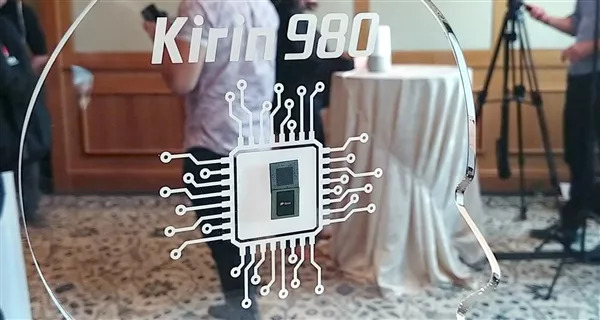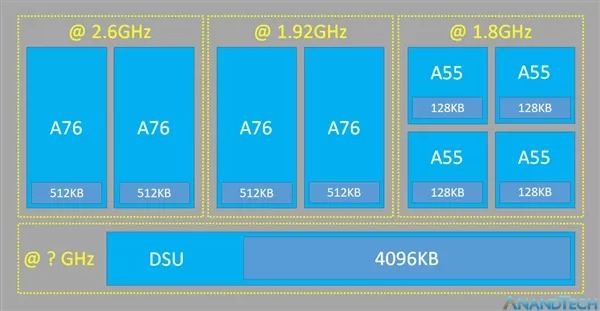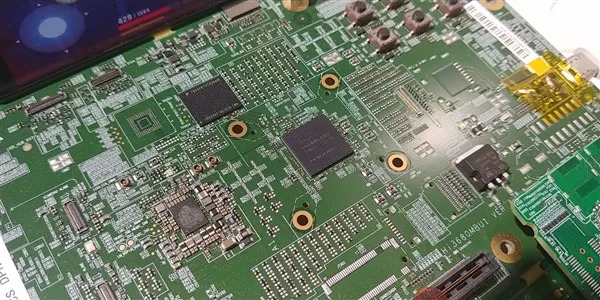Recently, Huawei officially released a new generation of flagship platform Kirin 980, all specifications are very dazzling, steadily reaching world-class standards. The Mate 20 series that will debut on October 16th, the Honor Magic 2 with a full-screen sliding cover design Will also carry.
Huawei has announced a number of specifications of the Kirin 980, and AnandTech has dug into more details, let’s take a look.

Kirin 980 is the first commercial TSMC 7nm new process, which integrates up to 6.9 billion transistors, which is no longer necessary.
For CPU, the first commercial ARM Cortex-A76 high-end architecture is used, and it uses the DynamIQ CPU architecture design. Huawei calls it Flex-Scheduling multi-core intelligent scheduling mechanism, which combines four A76 and four A55 cores.
The four A76 cores are divided into two groups, two of which have a maximum frequency of 2.6GHz, which is responsible for providing extreme performance, and the other two are up to 1.92GHz, which are more balanced in terms of energy efficiency and will not cause performance waste.
The other four A55 cores are all up to 1.8GHz, specializing in low-load applications and better energy efficiency.
In terms of cache, the four A76s are all equipped with 512KB L2, and the four A55s are all 128KB L2. The L3 cache in DSU (DynamIQ Shared Unit) is a complete 4MB, which is twice that of the Snapdragon 845.

The first commercial ARM Mali-G76 for GPU, with ten cores and a frequency of 720MHz.
The basic architecture design of G76 has changed a lot compared with the past. The width of texture unit, rendering unit, and arithmetic pipeline have all doubled. Therefore, one G76 core is basically equivalent to two G72 cores, so the graphics performance of Kirin 980 G76MP10 can be improved. It surpasses the Kirin 970 G72MP12 by a large margin, and the official claims to have a performance increase of up to 46%.
Although Huawei also admits that the performance of Kirin 980 GPU is not the strongest, it is still slightly weaker than Snapdragon 845, but on the one hand, it has GPU Turbo acceleration and performs better in popular games. On the other hand, it has complemented Kirin well. The GPU has always been weak in the processor, and it is no longer a shortcoming.
The memory supports four 16-bit channels of LPDDR4X, the frequency is increased to 2133MHz, which is the highest at present, the bandwidth can reach 34.1GB/s, and the storage aspect remains unchanged and continues to support UFS 2.1.
In terms of multimedia, it is equipped with a new fourth-generation ISP, and is a dual-unit configuration with a speed increase of 46%. It also supports 4K60fps video decoding and 4K30fps video encoding (60fps would be perfect).

Thanks to the strong communication technology, the baseband of Kirin 980 has reached a new level. It supports up to LTE Cat.21/18, and the current rate is up to 1.4Gbps, which is the industry's first. It supports 4x4 MIMO, three 20Hz carrier aggregation, 256 -QAM, and the download rate is up to 200Mbps, supports 2x2 MIMO, a single 20Hz band, and 256-QAM.
Although Kirin 980 does not integrate 5G baseband, 4.5G is undoubtedly a more sensible choice when 5G commercialization is still for a while, and Huawei also released 5G independent baseband Barong 5000, which is optional.
In this regard, the idea of ​​Kirin 980 and Snapdragon 855 is the same.
In terms of AI, Kirin 980 does not explicitly promote the second-generation NPU neural network unit, but only dual two NPU units, which have stronger computing power and support AI scenes such as face recognition, object recognition, object detection, image segmentation, and intelligent translation. There are deeper networks with higher precision and better real-time performance.

Kirin 980/970/960 specifications comparison

Kirin 980 architecture diagram

Kirin 980 development board (lower left)
Bimetallic thermometer combines two metals with different linear expansion coefficients, and one end is fixed. When the temperature changes, the thermal expansion of the two metals is different, which drives the pointer to deflect to indicate the temperature. This is bimetallic sheet thermometer, as shown in the figure on the above page. The temperature measurement range is - 80 ~ 500C, which is suitable for temperature measurement when the accuracy requirement is not high in industry. As a temperature sensing element, bimetallic sheet can also be used for automatic temperature control.

Bimetal Thermometer,Marine Bimetal Thermometer,Bimetallic Thermometer For Marine Pipeline,Bimetallic Thermostat Thermometer
Taizhou Jiabo Instrument Technology Co., Ltd. , https://www.taizhoujbcbyq.com